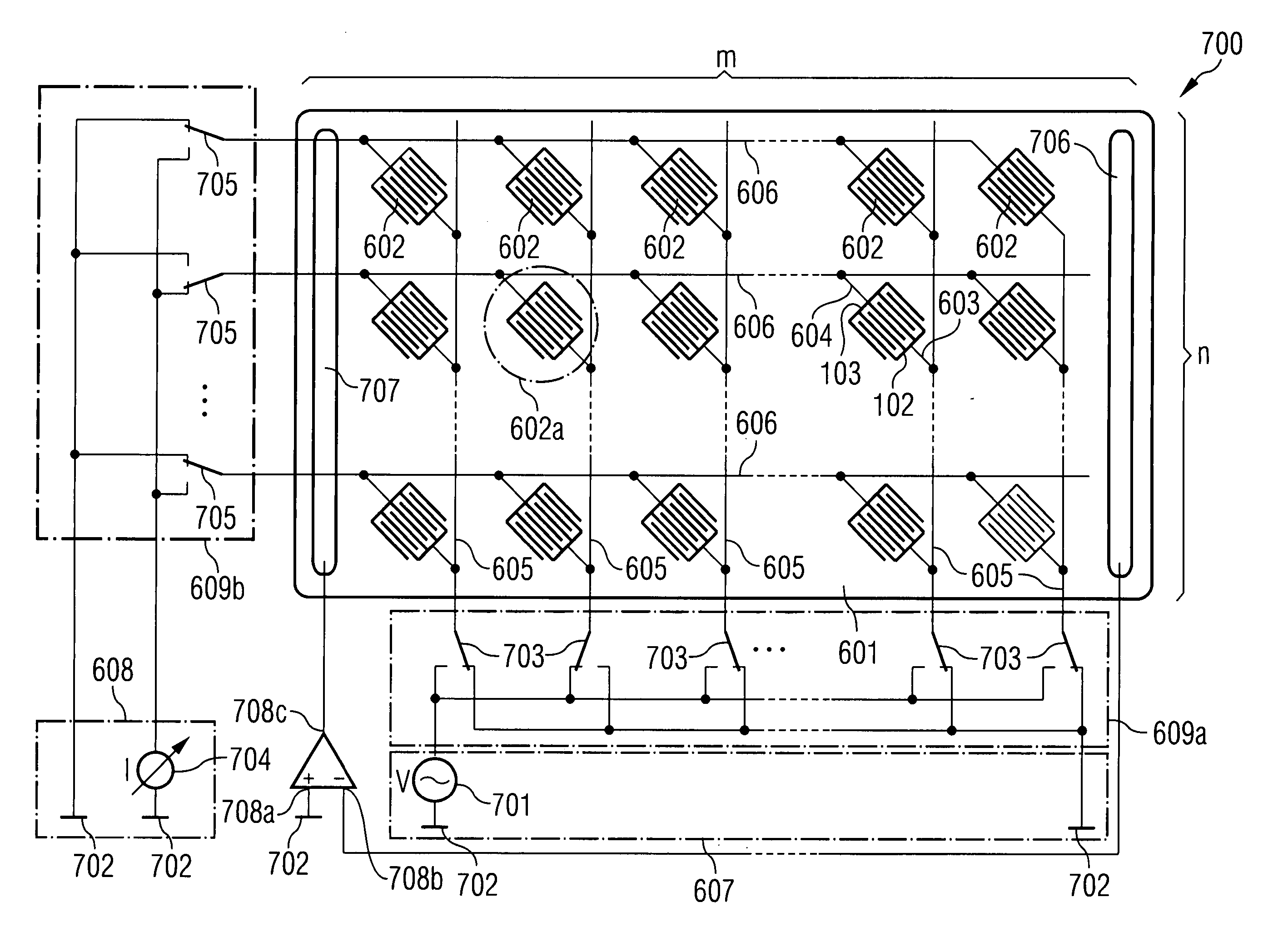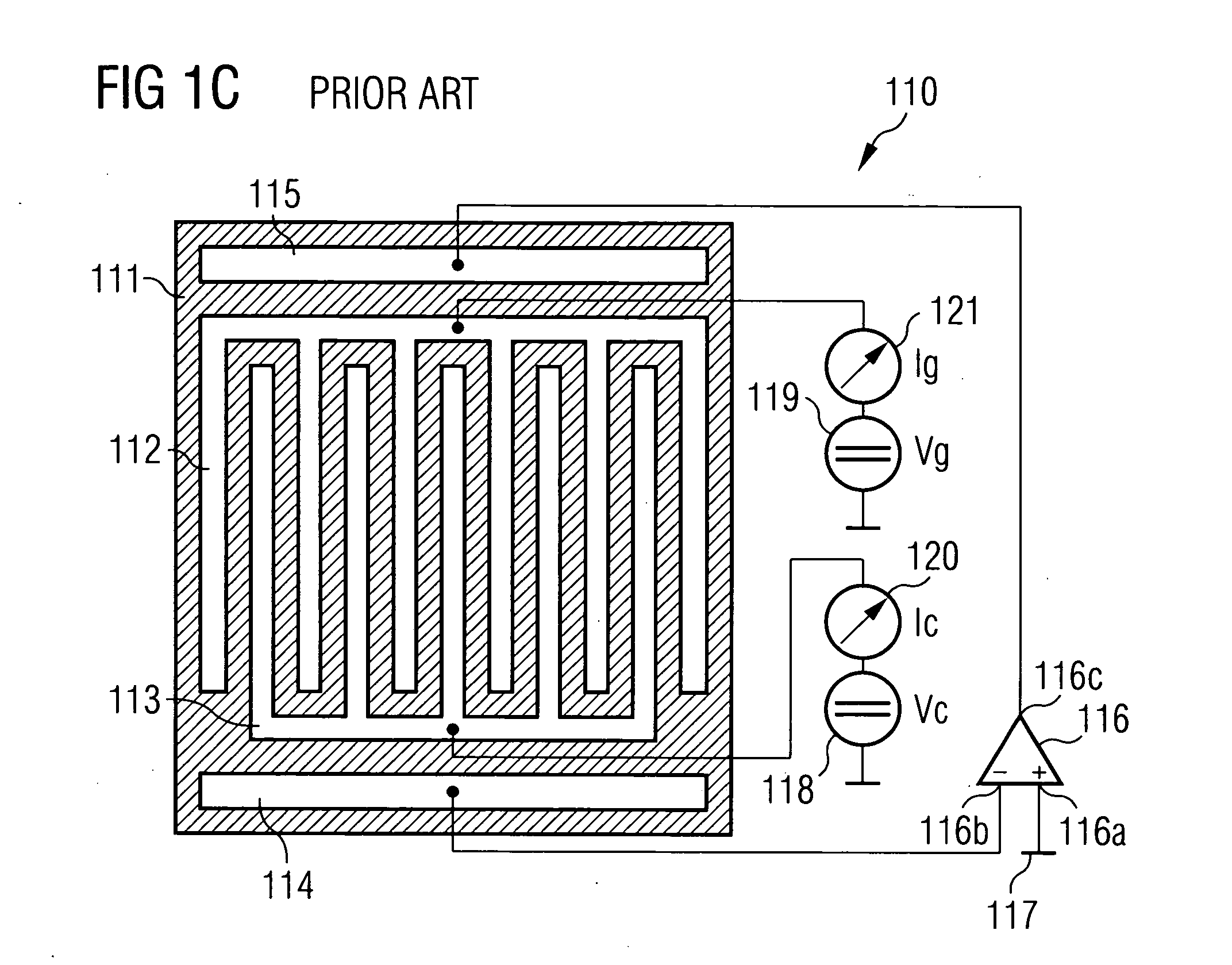Biosensors array and method for operating a biosensor array
- Summary
- Abstract
- Description
- Claims
- Application Information
AI Technical Summary
Benefits of technology
Problems solved by technology
Method used
Image
Examples
Embodiment Construction
[0072] A basic idea of the invention consists in providing drive lines and detection lines that are provided jointly for in each case a plurality of biosensor zones of a biosensor array, thereby considerably reducing the number of signal lines required for operating the biosensor array. This makes it possible to operate a biosensor array (in particular on a passive chip) with a relatively small number of signal lines and a small number of pads coupled to the signal lines. This saves space on the biosensor array, which enables a higher integration density, and the production costs are reduced. The array architecture according to the invention is also of interest for active chips since it permits the circuitry outlay per biosensor zone to be kept low, which in turn enables the production of high-density arrays. In the case of active biosensor arrays, additional circuit devices (for example preamplifiers, AD converters, etc.) are provided on the substrate.
[0073] For a, by way of examp...
PUM
| Property | Measurement | Unit |
|---|---|---|
| Time | aaaaa | aaaaa |
| Current | aaaaa | aaaaa |
| Electric potential / voltage | aaaaa | aaaaa |
Abstract
Description
Claims
Application Information
 Login to View More
Login to View More - R&D
- Intellectual Property
- Life Sciences
- Materials
- Tech Scout
- Unparalleled Data Quality
- Higher Quality Content
- 60% Fewer Hallucinations
Browse by: Latest US Patents, China's latest patents, Technical Efficacy Thesaurus, Application Domain, Technology Topic, Popular Technical Reports.
© 2025 PatSnap. All rights reserved.Legal|Privacy policy|Modern Slavery Act Transparency Statement|Sitemap|About US| Contact US: help@patsnap.com



